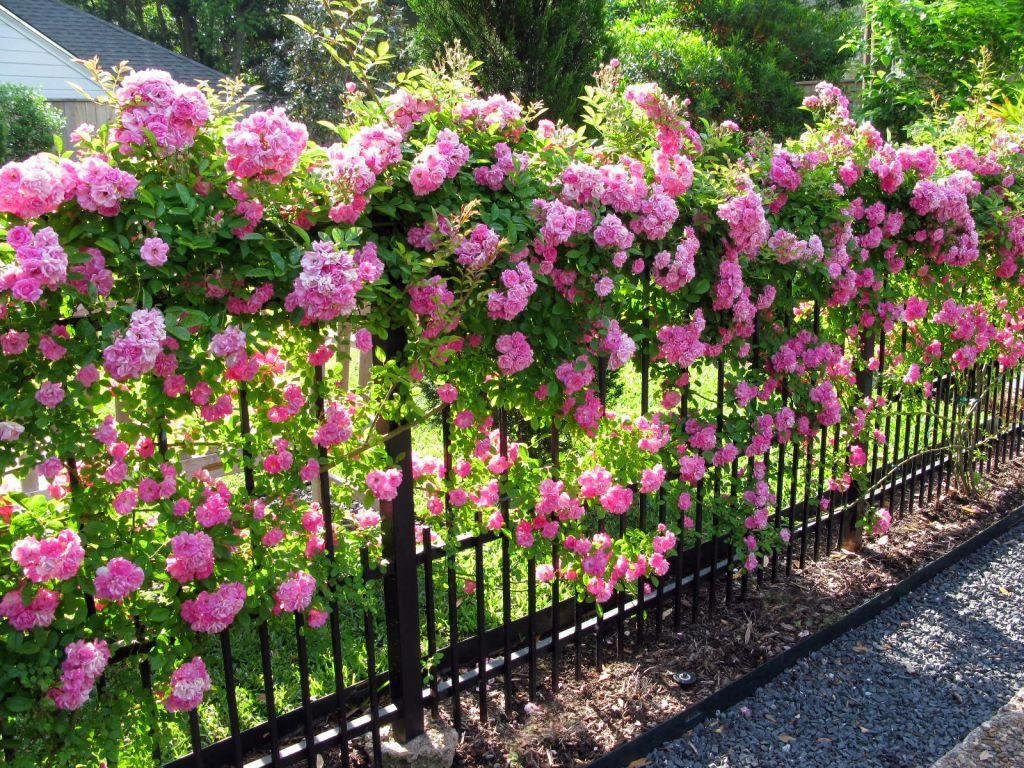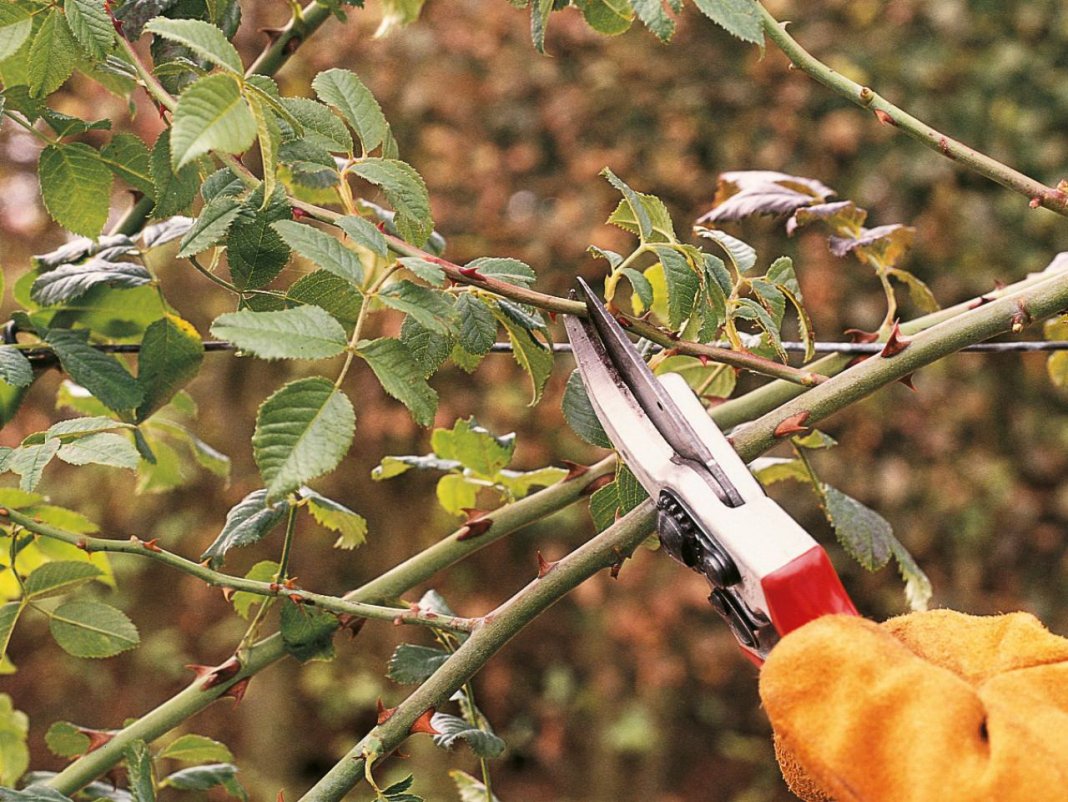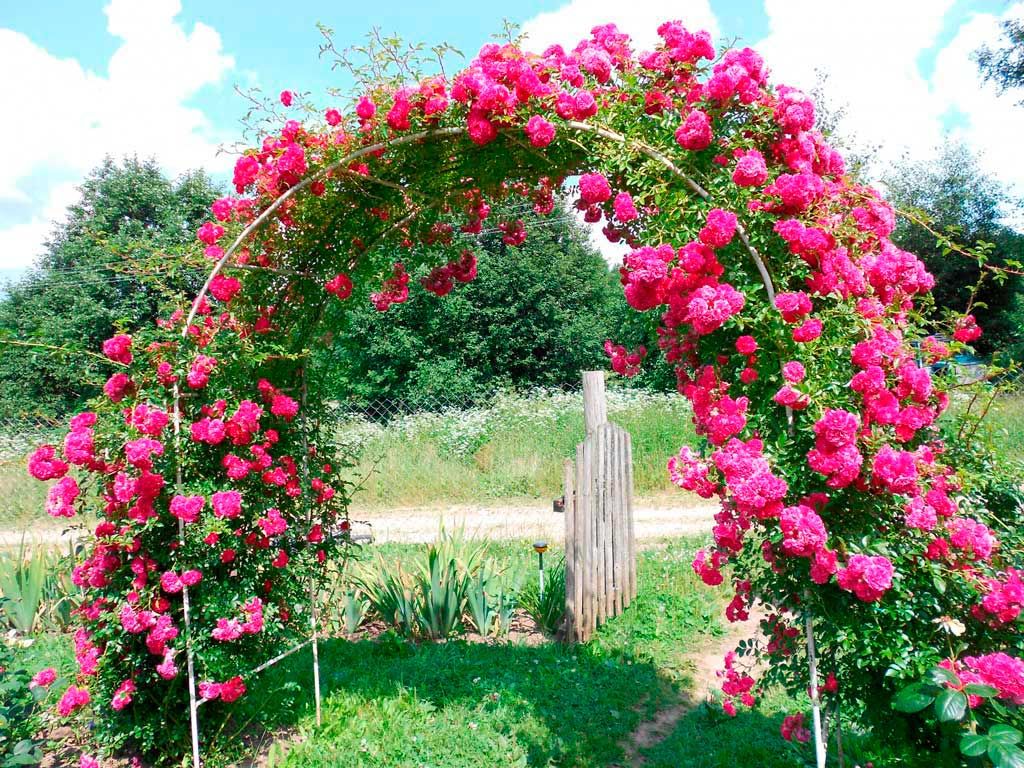Why the climbing rose does not bloom, but grows in height
Content:
A climbing rose is a wonderful decoration for a garden, cottage, house or park. Due to its decorative appearance, it is used in the design of gazebos, arches, columns, fences and other household structures. But the real disappointment for the gardener is if the plant stops blooming. Within the framework of this material, it will be analyzed in detail why the rose bush does not bloom.
Why the climbing rose does not bloom in the second year, but only grows in height

Climbing rose - a wonderful decoration of the garden gate
The reasons why roses do not please with their flowering may be different. First of all, this is due to improper care of a novice rose grower. At the first stage, it is very important to choose the right variety and choose the best planting place for it.
Most species of the royal flower will delight with buds in the second year of planting, after the shoots have successfully wintered. This is one of the important conditions for flowering. If the climbing rose does not bloom in the second year after planting, perhaps an inexperienced gardener cut off last year's shoots too much.
Another reason why climbing roses do not bloom, but only grow in height is a rainy summer. In this case, the bush drives the so-called blind shoots, at the end of which leaves develop, and not a flower bud. To obtain color, you need to pinch 2-3 leaves and wait for the lateral shoots of their leaf axils to develop.
Excessive fertilizing with mineral fertilizers deprives plants of color, and only gives abundant green foliage. The shaded planting site is also the reason that the shrub refuses to release flowers, but only stretches upward.

Gorgeous flowering rose bush when properly cared for
Reasons for caring for a flower
Climbing roses, like other plants in the garden, need some care. If the important conditions for growing a flower are not met, it stops blooming.
Insufficient nutrient substrate and feeding
The queen of flowers is a moody plant and loves loose, fertile soil. If the plant does not bloom, it may lack nutrients, it suffers from soil depletion and does not receive enough organic and mineral components for full development and growth.
A hungry substrate can be easily corrected with organic supplements such as mullein infusion or chicken droppings. There are also other rules for fertilizing:
- Ammonium nitrate, which is brought under the bush in the spring after removing the shelter and pruning, will help the climbing rose to bloom.
- It is better to apply nitrogen-containing fertilizers after the period of bud formation begins, since an excess of this substance leads to the fact that the bush only grows greenery, forming new shoots, but is in no hurry to bloom.
- After the end of flowering, you need to do another top dressing using superphosphates. This activity is aimed at ripening shoots and preparing for winter.
But, in addition to the fertility of the substrate, its friability also affects the flowering of a climbing rose. The compressed soil under the bush will not contribute to the appearance of flowers, therefore loosening is a mandatory process to start flowering.

With proper care, the rose bush gives a lush bloom in the second year.
A lot of overgrowth
Plants often form shoots. These are small branches of shoots with leaves and thorns that appear in the root zone.
If unnecessary processes are not removed in a timely manner, the rose bush begins to run wild, grows into a rosehip and stops blooming. Also, overgrowth makes the bush too thick, and this attracts various pests. In the thick of the foliage, fungal diseases develop rapidly, which again leads to the fact that the plant does not bloom.
Incorrect cropping
The climbing rose only needs sanitary pruning. Excision of young shoots is undesirable, as this will not allow the bush to trail normally. Pruning should be done in moderation so that the bush does not waste a lot of energy on resuming life after the procedure.
Pre-winter pruning is carried out every year so that the bush can fully rest in winter. After the end of flowering, in the fall, the excision of excess and old branches is carried out, and then in the spring the royal flower will bloom much earlier.
A good time to prune when the night temperature approaches zero. If the procedure is carried out earlier, then young branches can grow on the climbing rose, which will be destroyed by frost, and the plant will lose strength.
Secrets of Correct Pruning:
- use a sharp, disinfected instrument;
- cut the shoots obliquely, without long stumps;
- the first to cut the buds directed towards the inside of the bush.

Autumn pruning of a bush before wintering
What else can have an impact on flowering
Sanitary bush pruning and fertile soil play an important role in the growth and flowering of the rose bush. But there are also some other factors that affect the formation of flowers.
Damage by pests and diseases

Climbing rose bark cancer
The reason the climbing rose refuses to bloom may be due to a disease of the plant. Rose bushes are most often susceptible to diseases in the form of powdery mildew or bark cancer. If a disease is detected, the necessary measures are urgently taken to save the bush:
- from powdery mildew, dormant buds and branches are sprayed with a 1% solution of Bordeaux liquid, the same solution can be used for preventive purposes - there will be no harm to the plant from this;
- to fight bark cancer will help feeding with potassium fertilizers (superphosphate and potassium sulfate), as well as the correct and timely shelter of the bush for the winter, pruning of affected shoots and excess growth, as necessary, airing the covered roses for the winter.

The defeat of pink shoots with powdery mildew
Bad landing
Sometimes gardeners, out of inexperience, begin to grow their first rose bushes in a place completely unsuitable for a royal flower. This can lead to a lack of flowering or death of the plant.
Rules for planting climbing roses for full flowering:
- The planting site is chosen with good lighting, but so that at noon the sun's rays do not fall on the plant.
- Climbing rose bushes must be protected from the north wind, otherwise the plant will not bloom in the cold.
- The plant does not like any neighborhood, especially with trees. They should grow in an area away from bushes.

A well-chosen planting site for a bush is essential for flowering.
Improper wintering
Plants require careful care not only in summer, but also in winter. It is important to correctly prepare the bushes for wintering, to make a special shelter so that they do not die from the cold or damp during the winter thaws. There must be an air gap between the shelter and the bush.
Preparation for winter begins at the end of summer, when loosening of the soil and frequent watering stops, nitrogen fertilization is excluded, all excess growth is cut off, as well as weak or damaged shoots.
Poor quality seedling or wrong variety purchased
In pursuit of an inexpensive seedling price, inexperienced gardeners may find that the young plant does not meet quality standards and, as a result, the rose will not bloom.
When buying, it is better to choose proven nurseries that are confident in their plants. It is also important to take into account the variety of the rose, since its own varieties are bred for each climatic zone. An improperly selected variety will not produce the expected flowering in an unsuitable climate.
How to make a climbing rose bloom

The climbing rose is a true queen of flowers
Sometimes a rose bush can grow to a large size, look healthy, but does not begin to bloom. How to make a climbing rose bloom in this case is not clear for some gardeners. For starters, make sure the variety is suitable for growing in a given climate. Next, you need to check the soil - in heavy, clogged soil without fertilizing, the culture will not bloom.
Sometimes, in order for the climbing rose to bloom, it is necessary to cut off the upper shoot and wait for the formation of side branches with flowers.
If the bush is in the shade, flowering will not occur until the shading source is removed. In this case, the plant will not bloom, but only grow up and reach for the sun.
If you pay a lot of attention to plants, no diseases, pests and other external factors will prevent them from delighting everyone with their lush flowering.















